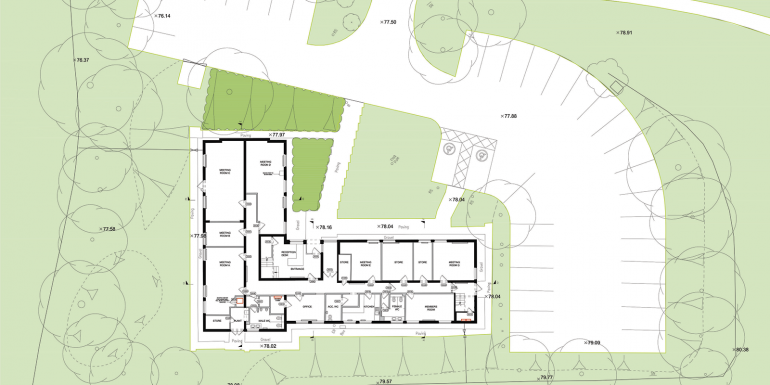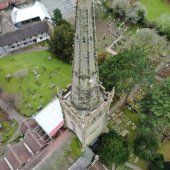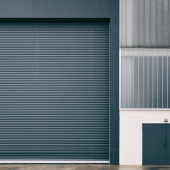Leading by example

Jackie Macaulay, Chief Operations Officer, CABE, discusses the importance of transparency and procurement in the refurbishment of CABE HQ.
The headquarters of CABE were purpose-built in the late 1970s and essentially have not been modernised since. The building consequently did not reflect who we were as an Association.
People came to CABE HQ to have their professional interview in front of a panel of experts and become a chartered member of a modern organisation, but that certainly was not the impression that the building gave.
In 2014, the Association received its Royal Charter and following a rebrand in 2019, which relaunched the Building Engineer journal, a new CABE website and an IT system, it became clear that the building did not reflect the up-to-date organisation. Moreover, it offered staff a poor working environment that was too hot in summer and too cold in winter.
The building also hosted training courses in a room that was only accessible via stairs, so we needed to take urgent steps to make CABE HQ comply with Part M of the Building Regulations: Access to and use of buildings (England).
This first phase of work also lays solid foundations for later installation of the renewable technologies and low-carbon heating systems with the aim to make HQ carbon neutral. We recruited consultants to develop a roadmap to zero-carbon performance for the building that recommended installing solar panels and solar tubes, Monodraught natural ventilation and an air-source heat pump.
In light of CABE’s commitment to sustainability, an additional focus was placed on retaining and re-using as much of the original fabric as possible.
The biggest embodied carbon saving comes from the decision to retain the building as a whole, but we have worked hard to re-use existing materials such as ceilings, doors and woodwork where possible. This is not just about saving money – it might be cheaper to replace some elements – but about reducing waste and minimising demand for new products; for example, the old library shelves are being used to create features around the building.
We have also worked with the contractor to ensure that the uPVC windows, carpet and other items that are being replaced go to a specialist recycling plant.
How did CABE procure the project?
As CABE and its executive team are construction experts, the £0.5m project had to be procured in a professional way that upheld the values in CABE’s Code of Conduct, and it needed an architect and a contractor committed to similar values. Part of what we do is assessing the competency of our members, so it was important to us to be the best client we could be and manage the procurement to the highest standards.
As a not-for-profit organisation deriving income from membership fees and training courses, we had to spend resources openly and transparently. While we wanted a modernised and sustainable building, our focus was on enhancing the services offered to staff and the industry.
Selecting the architects
The procurement process we followed involved the creation of a clear and detailed project plan before we invited expressions of interest. We defined the project plan with terms of reference, tender documents and clear objectives for the outcome of the project. This created a detailed tender brief that included the culture we wanted to build, the working relationship we wanted with the winning bidder and how the project would add value to the Association.
We advertised and approached various architects, including local suppliers, and longlisted firms were invited to an informal interview at HQ. This gave them the chance to ask further questions and to understand more about the project. It also ensured that we established a relationship before they made the decision to go to full tender. Upon receiving the submitted tender documents we followed a shortlisting process and identified architects that met the tender brief in the most appropriate way. We then held final interviews and presentations with the senior executive team.
Stagg Architects were selected as it was clear from their tender that they not only met the brief, but that they wanted to work with us, as a professional association. They wanted to create a building with a building engineer focus and not just create a building with architectural features – a building that functioned for us. Their values on sustainability and the circular economy sat alongside our desire for the project to improve the carbon footprint of HQ and to recycle and reuse materials wherever possible.
Selecting the contractors
The same procurement process was followed with the contractors and we invited expressions of interest. Interested parties visited HQ for an informal interview and to take a look at the building. These informal visits proved to be beneficial for all parties allowing them to visualise the project and discover more about our drivers. Following submission of tender documents, a shortlist of contractors presented their tender to the executive team. As part of the tender presentation we asked the contractors for information about other relevant projects that they had worked on, on staff competency, sustainability and their financial stability, as well as the project budget and timeline. It was important to us that that the successful contractor’s key values aligned with our own.
We were looking for evidence of good practice around not just their ability to undertake the project, but the way they worked with their staff and their subcontractors. After all, financial stress is a big issue in the construction industry and can have a devasting impact on an individual’s mental health and wellbeing.
We wanted evidence of ensuring health, safety and wellbeing standards on-site; especially as the building would be occupied throughout the project, which would mean there would be potential contact points between CABE staff and construction workers for the duration of the project. The final tenders were all within £50,000 of each other reflecting the detailed brief and comprehensive scheme information, reinforcing the benefits of the additional time spent on the brief and talking to the contractors before they submitted tenders.
Ultimately, we appointed local contractor, Steele & Bray. Their commitment to sustainability and recycling – on average over 80% of waste produced on their projects is recycled – firmly met with the tender’s objectives. They have a strong record on health and safety and wanted to build a relationship with us – an important factor in ensuring the project’s success. Part of CABE’s mission is to share knowledge and raise standards within the industry and Steele & Bray’s commitment to an apprenticeship programme, with links with Moulton College, aligns with this mission. Their scheme supports young people entering the construction industry and equips them with the necessary skills to help ensure a competent workforce for the future.
Phase 1
With the impact of Covid-19 and uncertainty in the economy, it became clear that the full scope of the zero-carbon requirements would not be possible without dipping into the Association’s reserves. It was critical to install the external lift to meet the disability and access requirements of Part M, and we were determined to create the best possible working environment for staff, members and visitors. We took out the explicit requirement to make the refurbishment carbon neutral, removing certain elements including the air-source heat pump.
As we had conducted the procurement by focusing on building a positive relationship and shared values, the architects and contractors were prepared to work with us on the changes without this affecting the overall intention.
What will the offices be like after this first phase of works?
We will have a series of ground-floor meeting and boardrooms, and a coffee area with doors opening out to the grounds, which we plan to landscape for air quality and biodiversity over the coming years. Upstairs we will have the main office, a dedicated AV suite and a large teaching space. It will be a bright, airy and relaxed working environment for staff, members coming for a professional interview or those attending training sessions. We are also equipping the building to become an income generator; as so many people are now working from home there is a need for meeting space and hot desking.
Carrying out the project in the middle of Covid-19 has shown the benefits of building the relationship between us and the contractors, as we have been able to continue in difficult circumstances without any extension to the programme or budget. It also means that we have been able to support employment in our own sector during a difficult period.
Being a good client is important to us, we hope that managing the procurement in the way that we have, shows how to get the best out of people and out of the construction industry.










